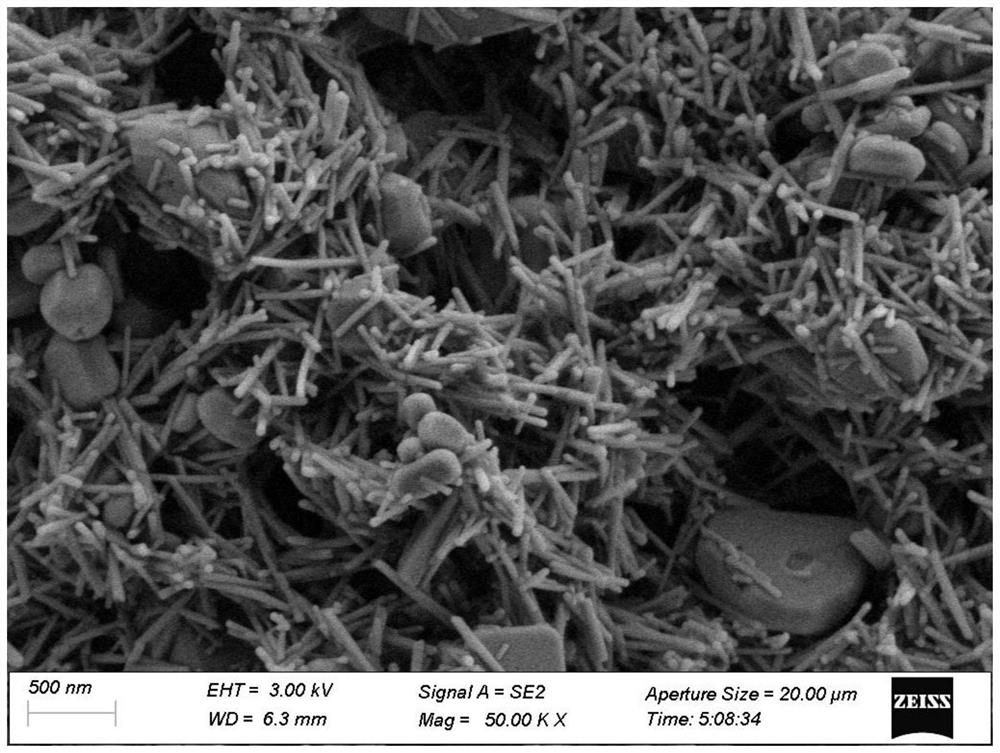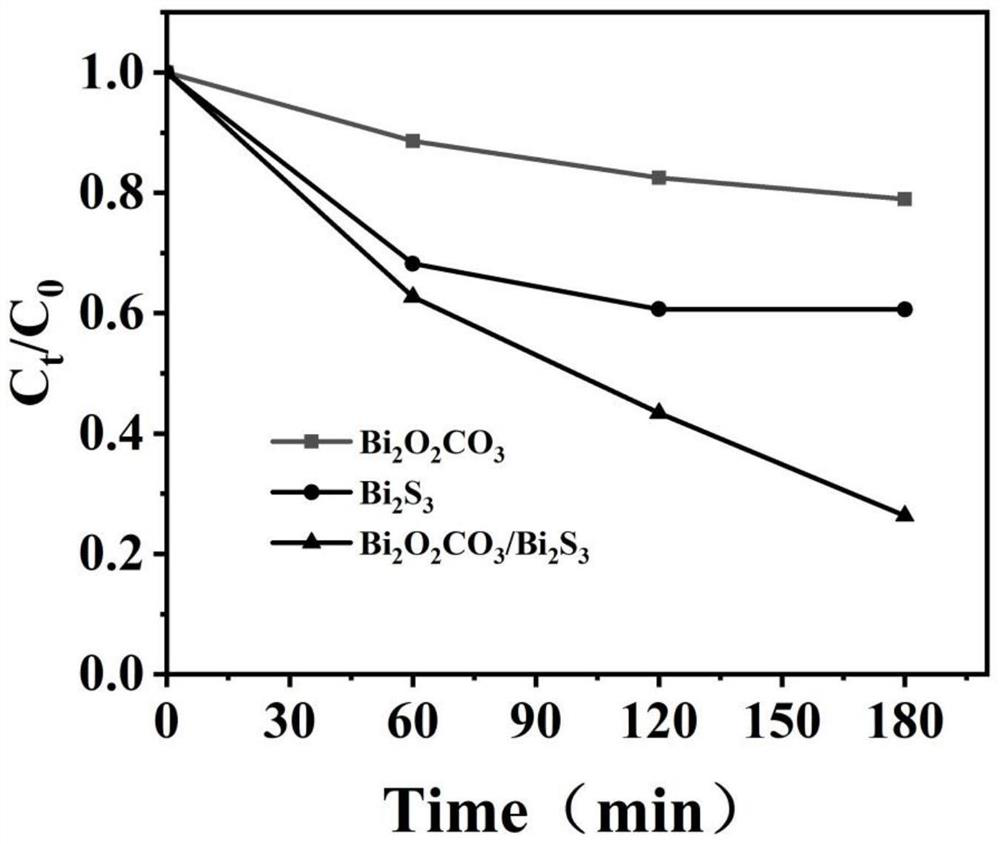Preparation method of bismuth subcarbonate-bismuth sulfide heterostructure photocatalytic material
A photocatalytic material, bismuth oxycarbonate technology, applied in chemical instruments and methods, physical/chemical process catalysts, chemical/physical processes, etc., can solve problems such as insufficient response, achieve low cost, accelerate separation, and improve photocatalytic activity Effect
- Summary
- Abstract
- Description
- Claims
- Application Information
AI Technical Summary
Problems solved by technology
Method used
Image
Examples
Embodiment 1
[0028] Add 0.5 g of urea to deionized water, stir to dissolve and add 2.75 mmol of Bi(NO 3 ) 3 ·5H 2 O, mechanical stirring. After the stirring was completed, 3 mmol of sodium sulfide was added to obtain a mixed solution. The mixed solution was mechanically stirred on a magnetic stirrer for 30 min. Transfer the mixed solution to a polytetrafluoroethylene liner, put the liner in a reaction kettle at 200°C and keep it warm for 24 hours for reaction; after the reaction is completed, cool it down to room temperature naturally, centrifuge the product, wash it with water, and wash it with alcohol , and dried at room temperature to obtain a bismuth oxycarbonate-bismuth sulfide heterostructure photocatalytic material.
[0029] The XRD patterns of bismuth oxycarbonate-bismuth sulfide heterostructure photocatalytic materials are shown in figure 1 ,Depend on figure 1 It can be seen that this embodiment indeed prepares a bismuth oxycarbonate-bismuth sulfide heterojunction. The SEM ...
Embodiment 2
[0031] Add 0.5 g of urea to deionized water, stir to dissolve and add 2.75 mmol of Bi(NO 3 ) 3 ·5H 2 O, mechanical stirring. After the stirring was completed, 4 mmol of sodium sulfide was added to obtain a mixed solution. The mixed solution was mechanically stirred on a magnetic stirrer for 30 min. Transfer the mixed solution to a polytetrafluoroethylene liner, put the liner in a reaction kettle at 200°C and keep it warm for 24 hours for reaction; after the reaction is completed, cool it down to room temperature naturally, centrifuge the product, wash it with water, and wash it with alcohol , and dried at room temperature to obtain a bismuth oxycarbonate-bismuth sulfide heterostructure photocatalytic material.
Embodiment 3
[0033] Add 0.5 g of urea to deionized water, stir to dissolve and add 2.75 mmol of Bi(NO 3 ) 3 ·5H 2O, mechanical stirring. After the stirring was completed, 4 mmol of sodium sulfide was added to obtain a mixed solution. The mixed solution was mechanically stirred on a magnetic stirrer for 30 min. Transfer the mixed solution to a polytetrafluoroethylene lining, put the lining in a reaction kettle at 180°C and keep it warm for 24 hours for reaction; after the reaction is completed, cool it down to room temperature naturally, centrifuge the product, wash it with water, and wash it with alcohol , and dried at room temperature to obtain a bismuth oxycarbonate-bismuth sulfide heterostructure photocatalytic material.
PUM
| Property | Measurement | Unit |
|---|---|---|
| Particle size | aaaaa | aaaaa |
Abstract
Description
Claims
Application Information
 Login to View More
Login to View More - R&D
- Intellectual Property
- Life Sciences
- Materials
- Tech Scout
- Unparalleled Data Quality
- Higher Quality Content
- 60% Fewer Hallucinations
Browse by: Latest US Patents, China's latest patents, Technical Efficacy Thesaurus, Application Domain, Technology Topic, Popular Technical Reports.
© 2025 PatSnap. All rights reserved.Legal|Privacy policy|Modern Slavery Act Transparency Statement|Sitemap|About US| Contact US: help@patsnap.com



